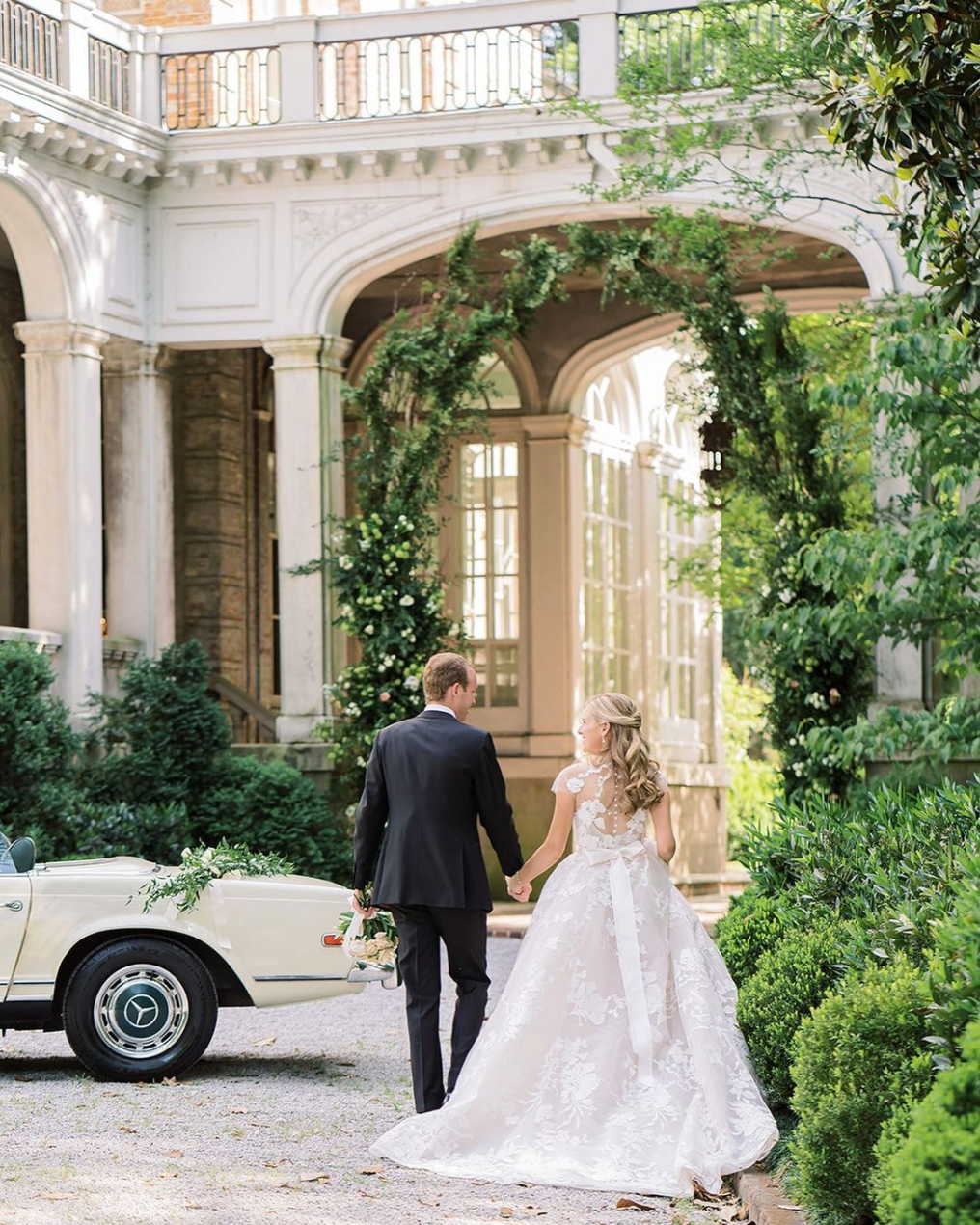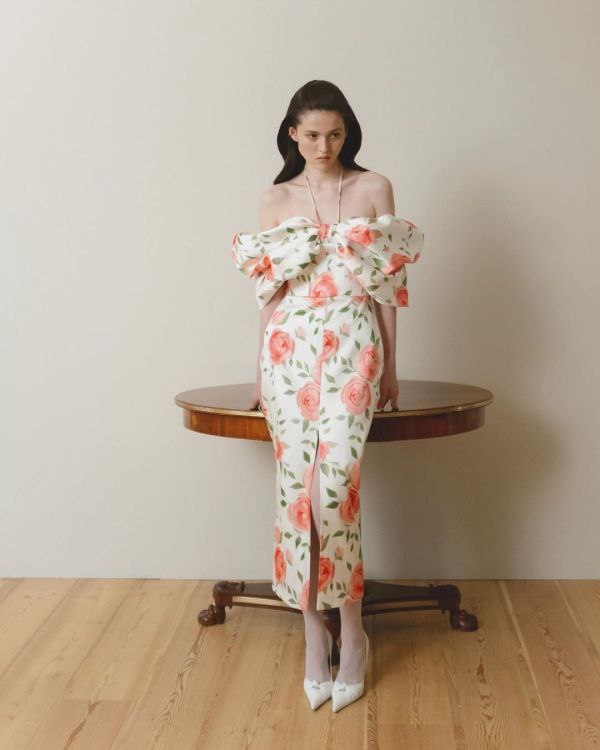Understanding Muslim Wedding Celebrations
- Author: Natali Grace Levine
- Reading time: 18 min 37 sec
- Publication date: 10/28/2024
- Updated: 08/15/2025
- Muslim Wedding: Engagement and Proposal Traditions
- Islam Wedding Traditions: Pre-Wedding Celebrations
- Muslim Wedding Ceremony: The Nikah
- Muslim Wedding Rituals: Post-Ceremony Traditions
- Muslim Wedding Attire: Bride and Groom Styles
- What to Wear to a Muslim Wedding: Guest Etiquette and Attire
- Muslim Wedding FAQs
Muslim weddings are a beautiful fusion of faith, family, and festivity. For those wondering what a Muslim wedding is like, these ceremonies are rooted in rich cultural traditions and guided by deep religious values, bringing loved ones together to honor the union of two people. Each element of a Muslim wedding holds symbolic significance, making the occasion not just a celebration of love, but a meaningful expression of tradition and commitment. From the initial engagement to the wedding ceremony, and through to the post-wedding events, every step in a Muslim wedding journey reflects the values of family, respect, and unity.

Muslim Wedding: Engagement and Proposal Traditions
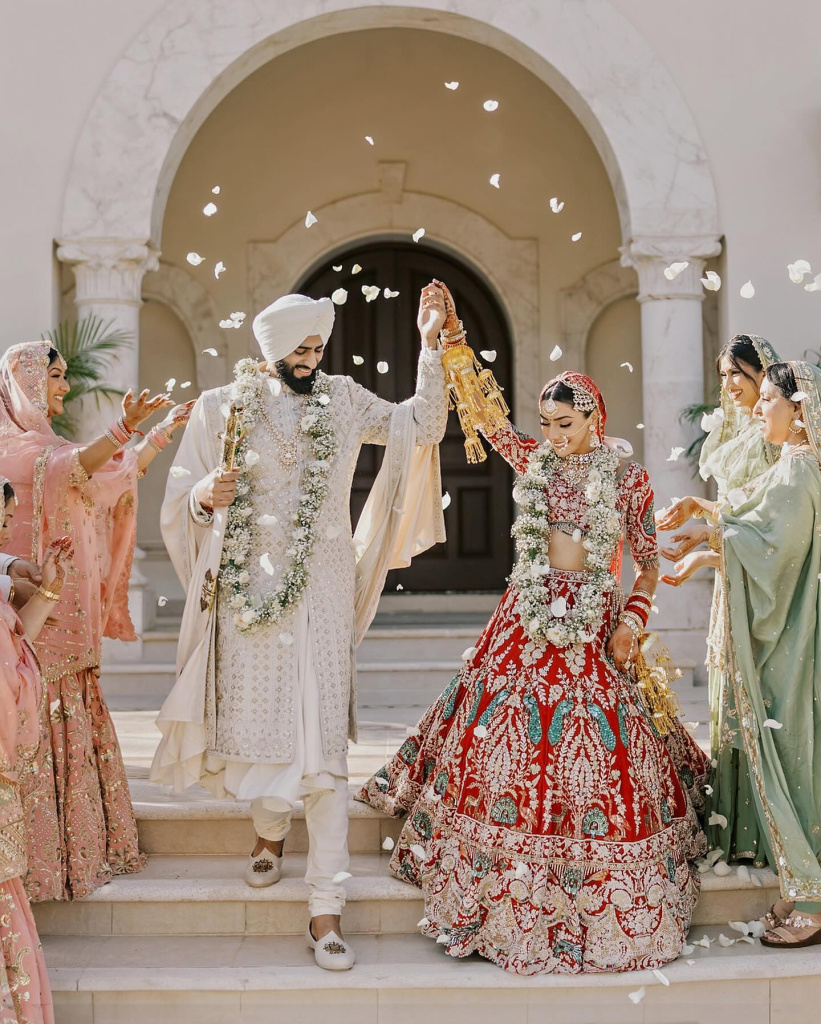
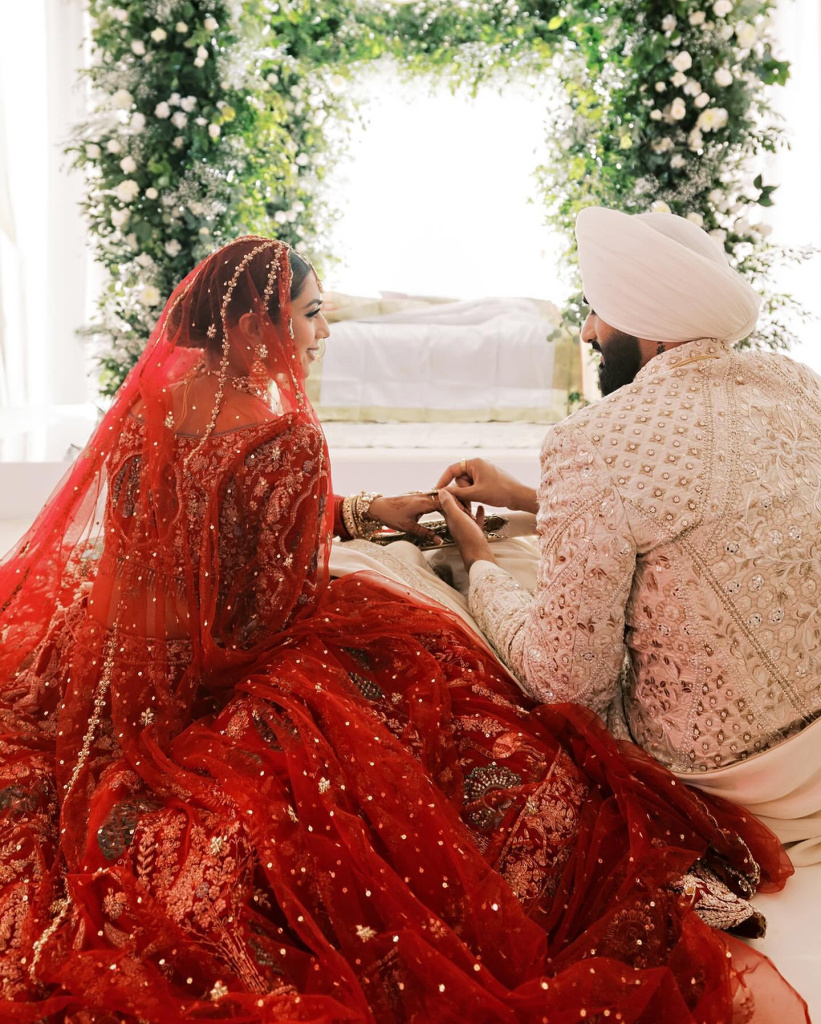
The journey to a Muslim wedding begins with a thoughtful and intentional engagement process that involves not only the couple but often both families. In Islam, marriage is regarded as a sacred and lifelong partnership based on mutual love, respect, and shared values. The engagement phase sets the foundation for a harmonious relationship by fostering understanding and alignment between the families.
Formal Marriage Proposal
The formal marriage proposal, also known as khitbah, is a time-honored tradition where families of the bride and groom meet to discuss the potential marriage. In some cultures, this initial meeting is arranged by close family members or matchmakers who know both families well. During this meeting, the families discuss key aspects of compatibility, such as religious beliefs, family values, and future plans.
Once the families agree that the marriage would be mutually beneficial, they may exchange gifts, blessings, or tokens of goodwill to signify their support. Gifts could include symbolic items like sweets, traditional clothing, or flowers, representing the joy of the union. In more modern settings, couples who have met on their own may introduce their families to formalize the proposal in a way that respects cultural and religious traditions. This proposal phase can sometimes involve multiple meetings, allowing both families to feel comfortable and aligned before moving forward with an engagement.
Istikhara: Seeking Divine Guidance
Istikhara, or the prayer for guidance, is a key spiritual step in Islamic engagements. This prayer is performed by the couple, their families, or even both, asking Allah to guide them in making the right decision. The prayer includes a request for Allah’s blessing over the union if it is the right path and a plea to be diverted from it if it is not in the couple’s best interests. This act emphasizes the belief that marriage is not merely a social contract but a bond established with divine approval.
Setting the Terms and Agreement
Once the families agree to proceed, they may discuss important terms for the engagement and marriage. This typically includes setting the mahr, or dowry, which is a mandatory gift from the groom to the bride. The mahr is an essential part of the Islamic marriage contract and is seen as a gesture of the groom’s commitment and respect for his bride. It can be in the form of money, gold, jewelry, or any asset agreed upon by both families, with the amount or value reflecting the couple’s unique circumstances. The terms of the mahr are discussed openly and agreed upon before the wedding, ensuring that both families are comfortable with the arrangement.
The Engagement Ceremony
In many Muslim cultures, the engagement is celebrated with a small ceremony that marks the official beginning of the couple’s journey toward marriage. This event may include immediate family members and close friends who gather to witness the engagement. Traditionally, the couple may exchange rings or gifts, symbolizing their commitment. The bride-to-be may also be presented with gifts from the groom’s family, such as jewelry, fabrics, or sweets, as tokens of goodwill and respect.
The engagement ceremony is often a joyous event with food, prayer, and a celebratory atmosphere. However, it is typically more modest than the wedding itself, as the engagement is seen as a preliminary commitment. In some regions, the bride and groom refrain from extensive interaction until the wedding day, upholding traditional values of modesty and propriety.
Engagement Announcements
After the engagement ceremony, families may choose to announce the engagement to their extended family, friends, and community. This can be done through an informal gathering, phone calls, or even a formal engagement announcement in some cultures. The purpose of this announcement is to share the joy of the upcoming union with loved ones, allowing the couple’s community to come together in support of their journey.
Islam Wedding Traditions: Pre-Wedding Celebrations
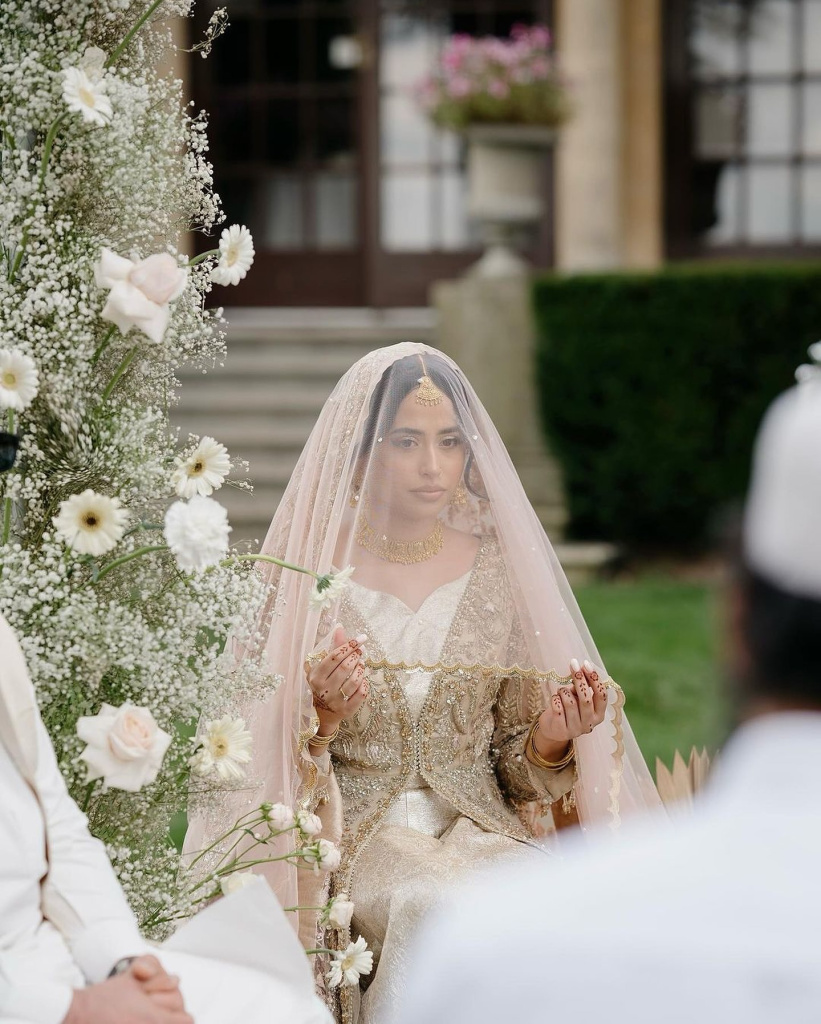
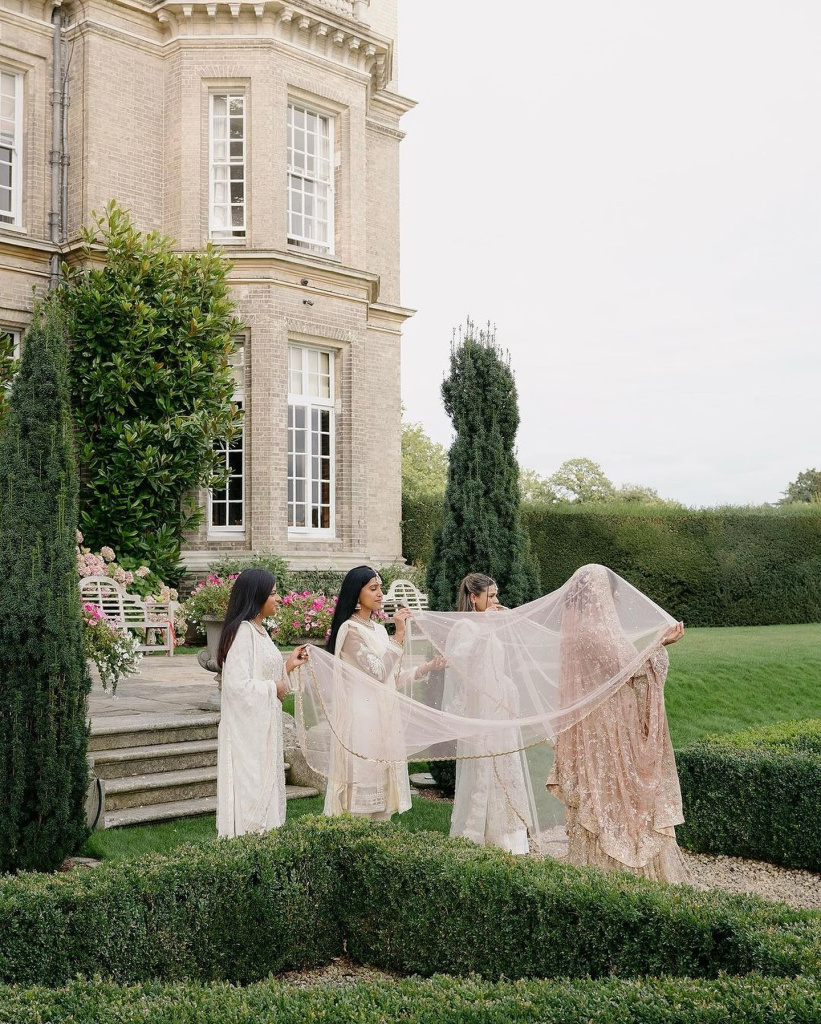
Muslim weddings are known for their vibrant pre-wedding celebrations, where family, friends, and the community gather to share in the excitement and joy leading up to the big day. These pre-wedding events, filled with color, music, and tradition, allow loved ones to bless the couple and create memorable moments together. Each celebration is unique to the couple’s culture, often reflecting their family’s roots and regional influences. While customs vary across the Muslim world, several beloved traditions bring life and meaning to the days leading up to the wedding.
The Henna (Mehndi) Night
One of the most anticipated pre-wedding events in Muslim weddings is the henna or Mehndi night, typically held a day or two before the wedding. During this lively celebration, the bride’s hands and feet are adorned with intricate henna designs, a symbol of beauty, joy, and protection. Mehndi is believed to bring good luck to the couple, with the darkness of the henna stain representing the strength of love and affection in the marriage. It’s also said that the longer the henna lasts, the more successful the marriage will be.
The henna night often has a festival-like atmosphere, with vibrant decorations, colorful lights, and traditional music that brings together family and friends for a night of dance, laughter, and bonding. In many cultures, guests wear brightly colored traditional attire, and the celebration includes songs, dances, and even choreographed performances. Family members may sing traditional songs, and the bride’s friends and relatives sometimes prepare special dances as part of the entertainment. In South Asian weddings, for example, this night is celebrated with much fanfare, often resembling a small wedding itself, complete with elaborate decorations, food, and gifts for guests.
The "Ubtan" or "Haldi" Ceremony
In South Asian and some Middle Eastern Muslim communities, the ubtan (or haldi) ceremony is another cherished pre-wedding tradition. During this ritual, a mixture of turmeric, sandalwood, and rose water, sometimes blended with other natural ingredients, is applied to the bride and groom’s skin. This paste is believed to purify and beautify the couple, giving their skin a natural glow for the wedding day. Turmeric, with its symbolic color of sunshine and purity, is thought to bring blessings and ward off any negativity surrounding the couple.
The Traditional Bridal Shower or "Gaye Holud"
In Bengali and some Southeast Asian Muslim communities, the Gaye Holud is a special pre-wedding event similar to a bridal shower, usually hosted by the bride’s family. During this celebration, the bride is adorned with a yellow sari, and her family applies a paste of turmeric and sandalwood to her skin, symbolizing blessings and purity. Guests arrive with gifts, flowers, and traditional foods, and the event often includes music, dance, and other forms of entertainment. Gaye Holud is celebrated by both the bride and groom’s families, typically on separate days, and brings together close family and friends.
"Mayoon" Ceremony
In South Asian cultures, especially among Pakistani Muslim communities, the Mayoon ceremony marks the bride’s official seclusion from family and friends in the days leading up to the wedding. This ceremony is often held in the bride’s home, where she is pampered with beauty treatments and special meals to prepare her for her new life as a bride. The bride’s family may decorate her room with flowers and bright fabrics, and she is encouraged to spend time resting and preparing mentally and spiritually for marriage.
During Mayoon, the bride is usually dressed in yellow, a color associated with auspiciousness and blessings. Family members, particularly the bride’s female relatives, gather to sing folk songs, apply henna, and celebrate with food. This intimate ceremony allows the bride to relax and bond with her loved ones in a cozy, private setting.
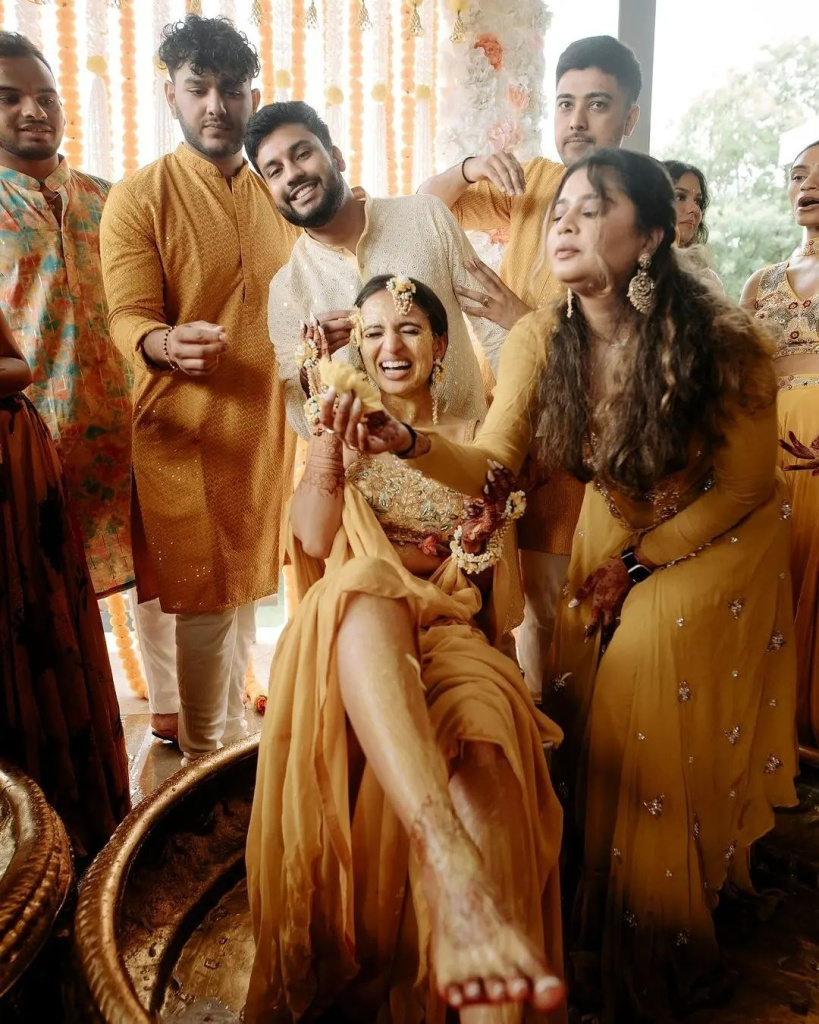
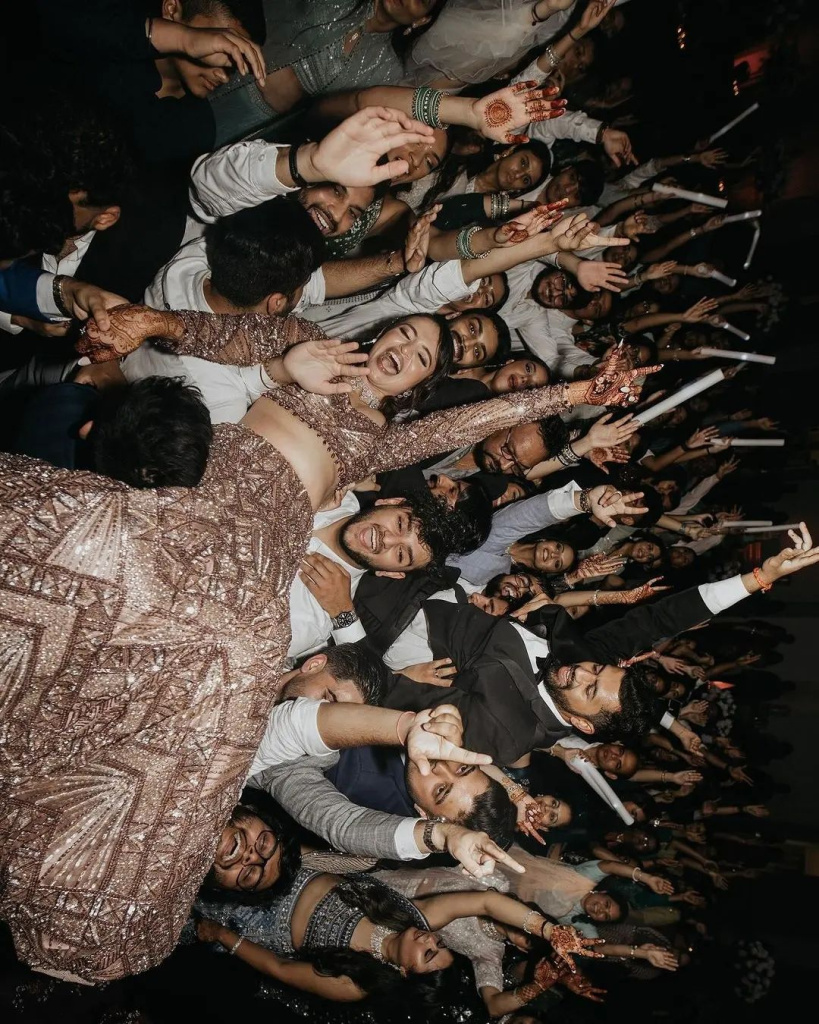
Sangeet: A Night of Music and Dance
While not universal, the Sangeet (meaning "music") is a joyous pre-wedding event celebrated in South Asian Muslim weddings, particularly in India and Pakistan. The Sangeet night is an evening filled with music, dance, and performances by family members and friends. Both sides of the family may come together for the Sangeet, allowing the bride and groom’s families to bond through singing traditional songs and performing dances choreographed for the occasion. It’s a high-energy night meant to relieve stress and bring happiness to the couple, giving loved ones an opportunity to express their joy.
Family Dinners and Pre-Wedding Gatherings
In Middle Eastern and African Muslim communities, pre-wedding gatherings and dinners are common and serve as a way for families to come together, share a meal, and exchange blessings. These gatherings are often informal, focusing on creating a welcoming atmosphere for both families to bond. Traditional dishes are served, and families may exchange gifts or tokens of goodwill. This time together builds familiarity and connection between the families, establishing the foundation for a long-lasting relationship.
Special Prayers and Blessings
In many Muslim cultures, pre-wedding celebrations also include special prayers and blessings to seek Allah’s guidance and protection over the marriage. Families may invite an imam to lead a dua (prayer) session, asking for the couple’s happiness, health, and harmony. This practice adds a deeply spiritual layer to the pre-wedding events, focusing on the significance of faith and Allah’s blessings in the couple’s future.
Exchange of Gifts and Jewelry
During pre-wedding celebrations, it’s common for the groom’s family to present gifts to the bride and her family, including jewelry, clothing, and other items meant to bring prosperity and joy. These gifts often symbolize the family’s respect and love for the bride. In some cultures, the bride’s family reciprocates with gifts for the groom, symbolizing unity and mutual appreciation. The exchange of gifts fosters goodwill and excitement, highlighting the joining of two families.
Muslim Wedding Ceremony: The Nikah
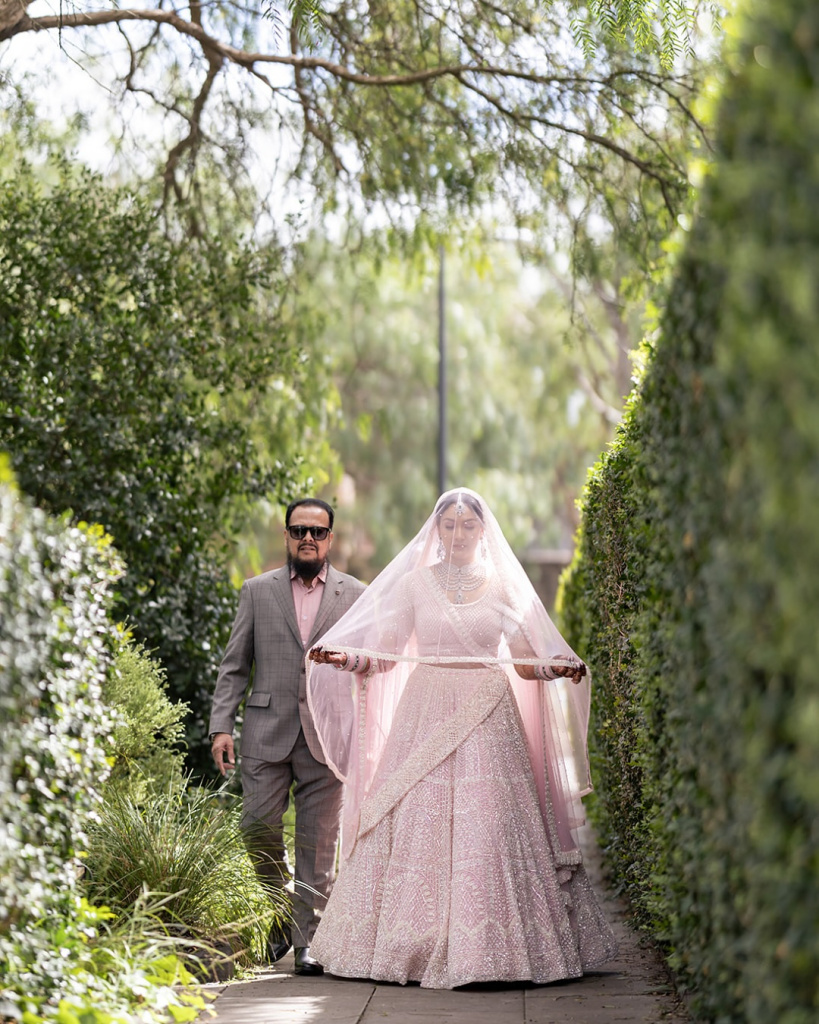
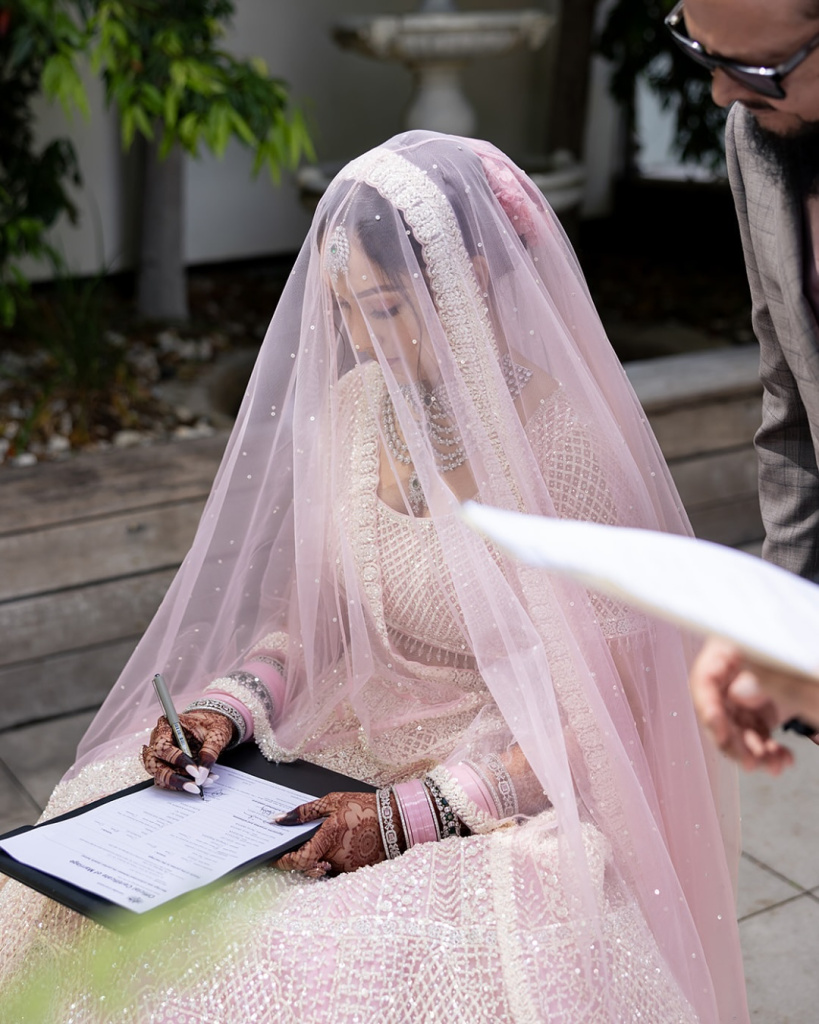
The Nikah is the central event in a Muslim wedding, the religious and legal ceremony that seals the couple’s commitment in both the eyes of their families and the eyes of Allah. Often simple and intimate, the Nikah is steeped in spirituality and tradition, embodying the values of love, respect, and equality. The Nikah holds a special place in Muslim weddings because it’s not just a contract; it’s a sacred bond that marks the beginning of a lifelong journey together.
The Nikah ceremony can vary in formality and setting, from a quiet family gathering in a mosque to a larger ceremony at home or a wedding venue, depending on cultural and family preferences.
Understanding the Nikah Ceremony
The Nikah, conducted by an imam or a family elder, consists of the marriage contract, vows, and the recitation of Quranic verses. Before the ceremony begins, there may be a sermon or khutbah from the imam, who shares insights on the importance of marriage in Islam and the values that should guide the couple. The Nikah serves as a formal agreement that the couple enters with the full blessing of their families and community, setting the stage for a marriage based on mutual respect and shared faith.
Often, the Nikah ceremony is simple and relatively short, emphasizing the importance of spirituality over extravagance. The simplicity of the Nikah allows the focus to remain on the commitment and responsibilities that come with marriage, reminding the couple of the values they are committing to uphold.
Ijab and Qabul: Formal Consent
Consent, or mutual agreement, is one of the most important aspects of the Nikah. Islam places great emphasis on the willingness of both parties to enter the marriage freely, making the verbal expressions of consent—Ijab (offer) and Qabul (acceptance)—a core component of the Nikah ceremony. The groom is asked first if he consents to marry the bride, followed by the bride’s consent. Both must agree willingly, usually by saying “Qabul” or “I accept,” in front of two witnesses, who testify to their mutual consent.
Quranic Verses and Prayers
Following the Ijab and Qabul, the officiant or imam may recite selected verses from the Quran, along with prayers asking for Allah’s blessings on the union. The verses chosen for this occasion often emphasize the principles of kindness, compassion, and partnership that should guide a married couple. For example, Surah Ar-Rum (30:21) is commonly recited, which speaks of love, tranquility, and mercy as the foundations of marriage.
Witnesses and Documentation
Islamic marriage requires the presence of two adult witnesses to validate the Nikah. Witnesses are essential as they affirm that the marriage was conducted openly and with the free consent of both individuals. Traditionally, the witnesses are often male relatives or family friends, though in some cultures, both male and female witnesses are allowed. The presence of witnesses highlights the community’s role in supporting the marriage and ensuring that it aligns with Islamic principles.
After the verbal affirmation and prayers, the marriage contract is signed by the bride, groom, and witnesses, marking the official completion of the Nikah. The contract, known as nikahnama in some cultures, is a legally binding document in Islamic law. It outlines the mahr agreement, the couple’s rights, and other essential terms, offering a formal record of the marriage that both families can refer to.
Sharing of Sweet Foods or Drinks
After the Nikah is completed, it’s common to share sweets, dates, or other treats as a symbolic gesture of joy and to sweeten the occasion. In many cultures, the bride and groom may share a drink, such as milk or juice, symbolizing unity and the sweetness of their new relationship. Family members and guests often join in this custom, marking the moment with blessings and congratulations.
Muslim Wedding Rituals: Post-Ceremony Traditions
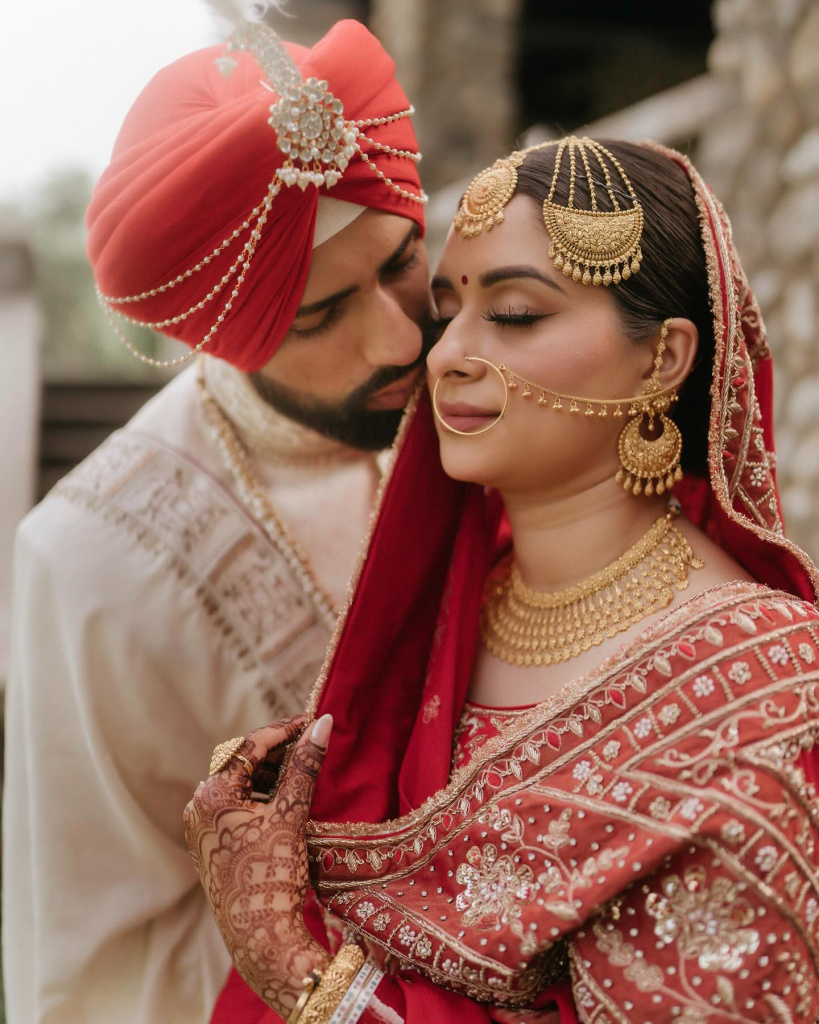
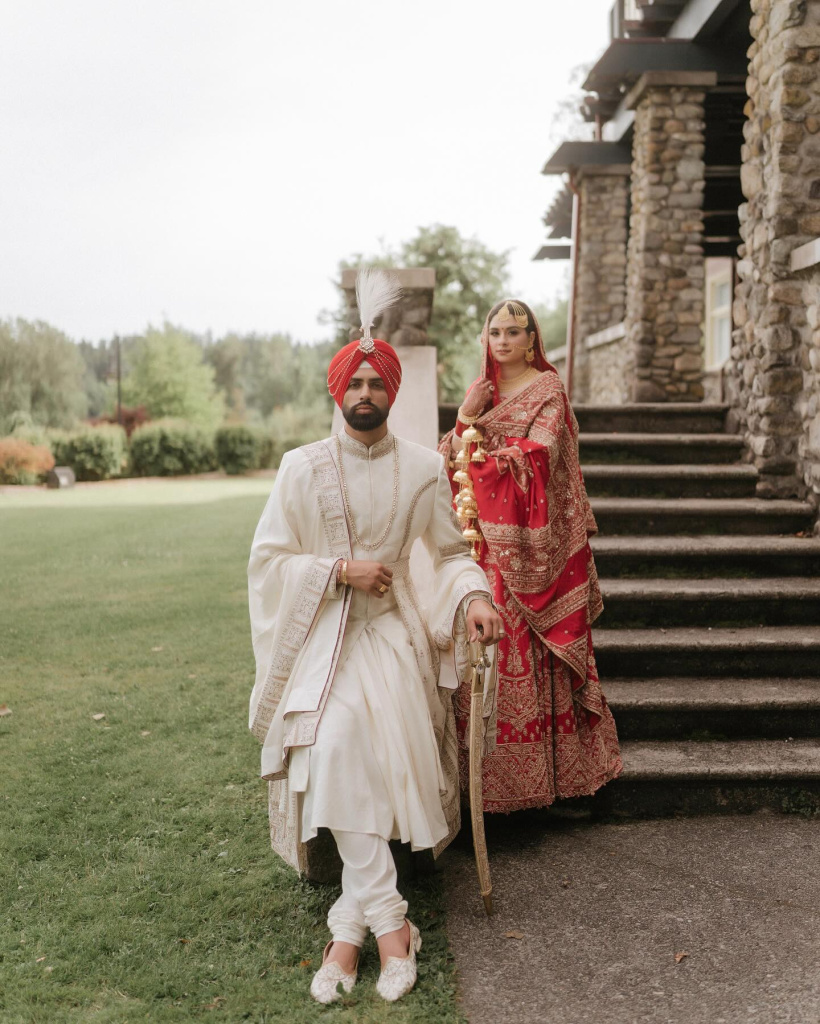
The post-wedding rituals in a Muslim wedding are filled with emotion, warmth, and unity, marking the beginning of the couple’s new life together. These traditions vary widely across cultures, each with unique customs that celebrate the union while respecting family values and Islamic principles. Post-wedding rituals signify the bride’s transition from her family home to her husband’s, where both families come together to wish the newlyweds a life of happiness, love, and faith.
Rukhsati: The Bride’s Farewell
One of the most heartfelt moments of a Muslim wedding is the Rukhsati, also known as the "bidaai" in some cultures. This tradition marks the bride’s official departure from her family home to join her husband’s family, symbolizing her new role as a wife. During the Rukhsati, the bride bids an emotional farewell to her family, often accompanied by tears, blessings, and prayers from loved ones. The bride’s father or elder male relative may escort her to the groom’s family, symbolizing his trust and acceptance of her new life.
Arrival of the Bride at Her New Home
Upon her arrival at the groom’s home, the bride is warmly welcomed by her new family in a ritual that varies according to cultural traditions. In some Muslim cultures, the groom’s mother or elder female relatives perform a welcoming ceremony, such as sprinkling rose water, offering sweets, or placing a Quran above her head as she steps into her new home. These gestures symbolize blessings, love, and protection, ensuring that her new life begins with joy and positivity.
In South Asian Muslim cultures, the bride may kick over a pot of rice or step into a plate of red powder, symbolizing prosperity and luck. This welcoming ritual not only highlights the family’s affection for the bride but also celebrates her arrival as a cherished member of their household. Often, close family members and friends are present to greet her, filling the home with warmth and happiness.
Walima: Muslim Wedding Reception
The Walima, or wedding feast, is the official reception hosted by the groom’s family to celebrate the marriage. Considered a sunnah, or recommended tradition, in Islam, the Walima is a joyous gathering that marks the couple’s union and invites the community to join in the festivities. The Walima is usually held the day after the Nikah or within a few days, allowing family and friends to come together and celebrate the newlyweds.
The Walima is often an elaborate event, featuring a feast of traditional dishes, desserts, and refreshments for the guests. It’s a time for both families to express gratitude and happiness, with speeches, blessings, and sometimes cultural performances or music. The groom’s family hosts this event as a way to formally introduce the bride to their extended family and community, welcoming her with open arms. The Walima is not only a celebration but also an opportunity for guests to offer prayers and congratulations, making it one of the most cherished events in the wedding journey.
Dua-e-Khair: Prayer for Well-being
Following the Walima, many families hold a special prayer session called Dua-e-Khair (prayer for well-being) where close family and friends gather to ask for Allah’s blessings on the couple’s marriage. This gathering emphasizes the importance of spirituality in the couple’s journey, bringing loved ones together to offer their best wishes for the new chapter ahead. Dua-e-Khair is often an intimate event, with family members reciting prayers for health, happiness, and harmony in the couple’s life.
The Couple’s First Visit to the Bride’s Family
After the wedding, it’s customary for the couple to pay a visit to the bride’s family, often called the Paon Dhoi or Mooh Dikhai in South Asian cultures. This visit allows the couple to reconnect with the bride’s family after the wedding and receive their blessings in their new roles as husband and wife. The bride’s family may welcome them with a special meal, gifts, or a small gathering in their honor. This tradition highlights the ongoing bond between the bride and her family, reassuring her that while she has a new home, her roots remain cherished and respected.
During this visit, it’s also customary for the bride’s family to present the couple with gifts as tokens of love and support. This exchange strengthens the ties between the families and celebrates the start of a new relationship.
Muslim Wedding Attire: Bride and Groom Styles
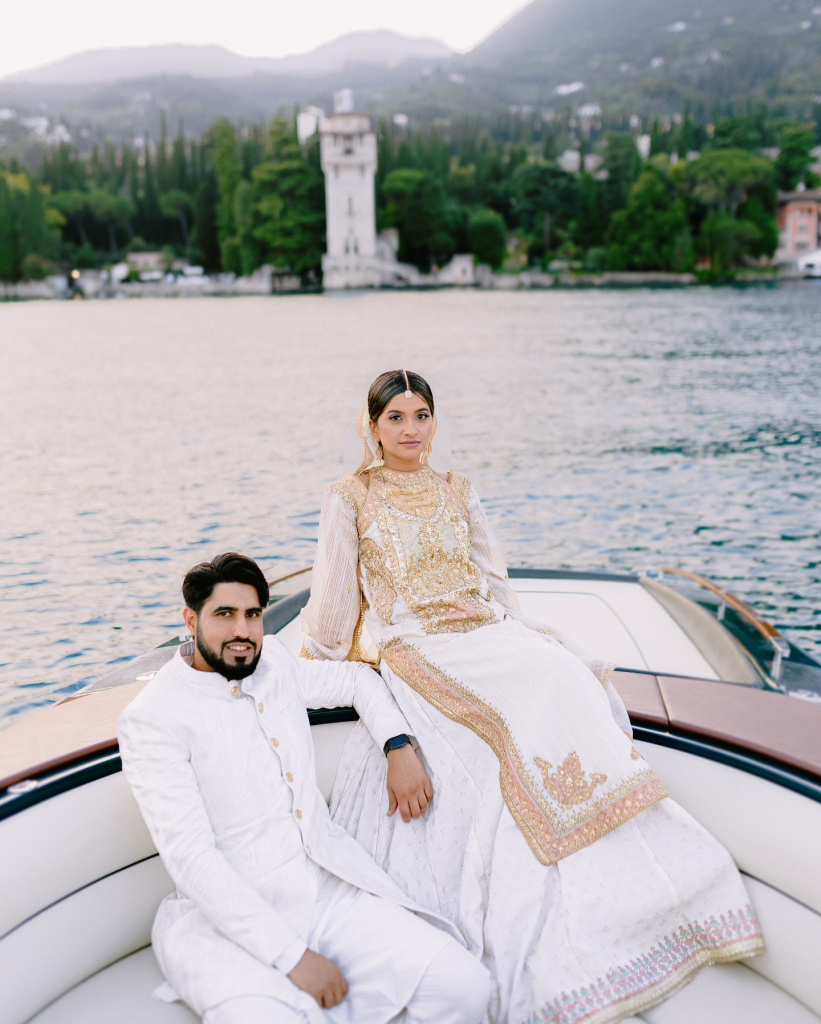
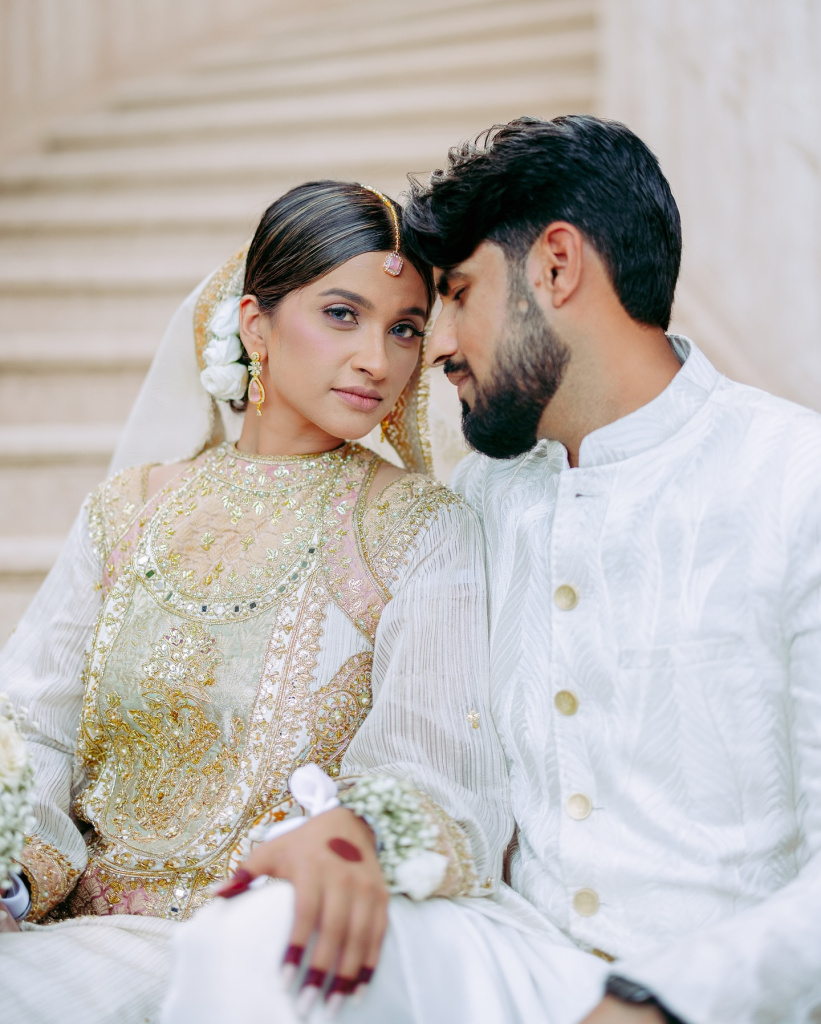
Muslim wedding attire is a beautiful blend of traditional elegance and cultural heritage, with each piece carefully chosen to honor the values of modesty, sophistication, and festivity. Muslim brides and grooms embrace a variety of styles that reflect their unique backgrounds, from intricate embroidery to vibrant colors. Muslim wedding attire varies across cultures and regions, with each tradition offering its own unique interpretation of bridal and groom fashion.
Bridal Attire: Colors, Fabrics, and Styles
Muslim brides are often adorned in striking attire that symbolizes joy, prosperity, and blessings. The specific style of the bridal outfit varies widely depending on cultural traditions. South Asian brides, for example, often wear richly colored lehengas or saris, frequently in red, green, or gold, which are traditionally seen as auspicious colors that signify happiness and good fortune. Middle Eastern brides might opt for elegant, modest gowns in white or ivory, aligning with Islamic values of modesty while adding a touch of sophistication.
Regardless of cultural background, bridal dresses are often elaborately designed with luxurious fabrics like silk, chiffon, and velvet, adorned with embroidery, beadwork, and sequins that add a layer of grandeur. Many Muslim brides wear additional decorative layers, such as a duppata or veil, often draped over the head and shoulders in a way that complements the dress. This veil symbolizes modesty and protection, aligning with Islamic values and family traditions. Brides also frequently incorporate meaningful colors, embroidery patterns, or symbols that reflect their cultural heritage, creating a look that is not only beautiful but deeply personal.
Jewelry and Accessories
Jewelry is an essential part of the bride’s attire, adding a touch of luxury and tradition to her wedding look. In South Asian Muslim weddings, brides typically wear elaborate jewelry sets, including necklaces, earrings, bangles, and rings, often crafted from gold and encrusted with precious gems. A maang tikka (forehead ornament) or matha patti (headpiece) may also be worn, along with a nath (nose ring) that symbolizes grace and femininity. In some cultures, a bride may wear an anklet or payal, adding subtle musical chimes to her steps, symbolizing her joyful presence in her new home.
In African Muslim or Middle Eastern weddings, brides may opt for more subtle, elegant jewelry that complements their gown. Pearls, diamonds, or delicate gold pieces are often chosen for their elegance and timeless beauty. These accessories are typically gifts from family members, symbolizing blessings and good wishes for the bride’s future. Each piece of jewelry holds its own significance, not only enhancing the bride’s beauty but also celebrating her cultural and family heritage.
Groom’s Attire: Traditional and Modern Options
The groom’s attire is chosen with the same thoughtfulness and attention to detail, reflecting both tradition and elegance. In South Asian Muslim weddings, grooms often wear sherwanis, long coats, or jackets adorned with embroidery, often paired with churidar pants or pajama pants. Sherwanis are typically in colors like ivory, gold, or deep hues, accented with delicate embroidery or beadwork that adds a touch of regality. The groom might also wear a turban or pagdi, sometimes adorned with a feather or brooch, symbolizing dignity and honor.
In Middle Eastern weddings, grooms commonly wear a thobe or bisht, a traditional white or off-white robe that reflects the simplicity and modesty valued in Islam. The bisht, an elegant black or brown cloak with gold trim, may be worn over the thobe for formal occasions, giving the groom an air of sophistication. In African Muslim cultures, grooms may wear flowing robes or embroidered tunics that honor their cultural roots while aligning with Islamic values.
For modern weddings, some grooms opt for a tailored suit, adding subtle accessories like cufflinks or a pocket square in the bride’s wedding colors. These suits can range from classic black or navy to more unique tones that complement the wedding theme and add a contemporary touch. Even with modern attire, traditional details are often incorporated, such as embroidered collars or a matching scarf.
Accessories and Symbolic Items for the Groom
In addition to his main attire, the groom may wear symbolic accessories that reflect his family’s cultural background or religious beliefs. A safa, or turban, is common in South Asian weddings, often adorned with a decorative brooch called a sarpech, symbolizing strength and honor. Grooms in Middle Eastern and African weddings may wear traditional head coverings, such as a keffiyeh or tagiyah, adding an authentic touch to their wedding look.
Some Muslim grooms also choose to wear a ring or bracelet gifted by the bride’s family, symbolizing their union and the connection between the two families. In certain cultures, the groom may be gifted a ceremonial sword or dagger, symbolizing protection and responsibility. These accessories not only add elegance to the groom’s attire but also carry cultural and familial significance.
What to Wear to a Muslim Wedding: Guest Etiquette and Attire
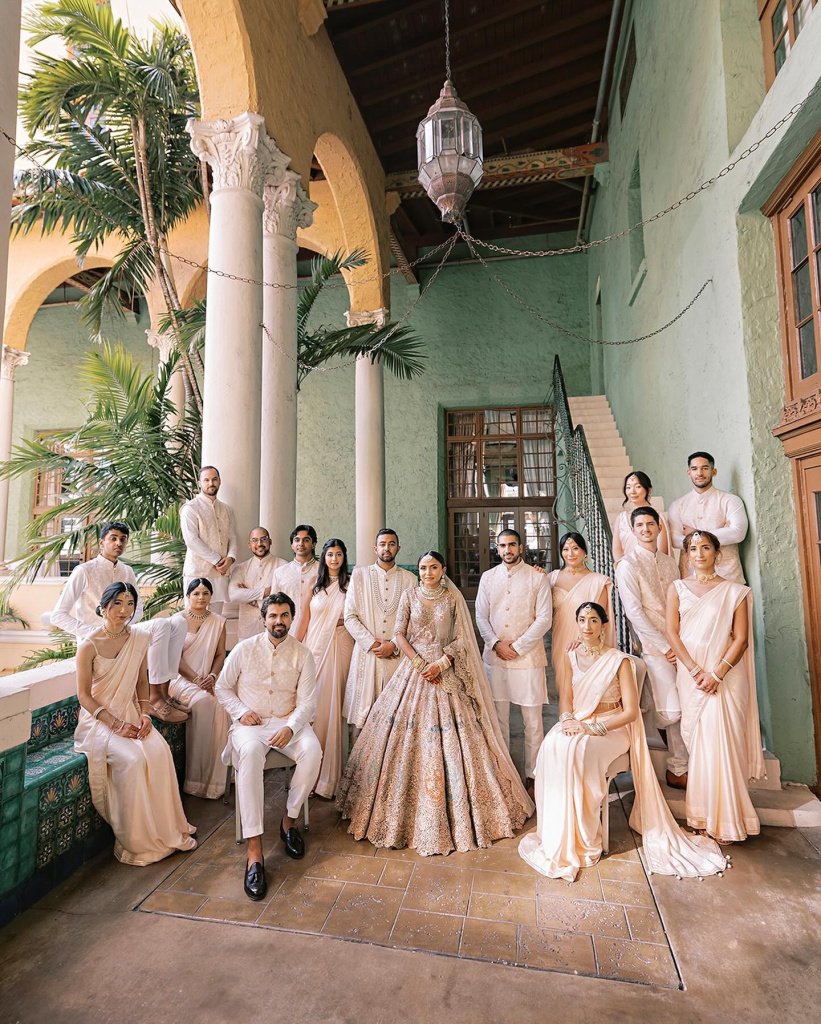
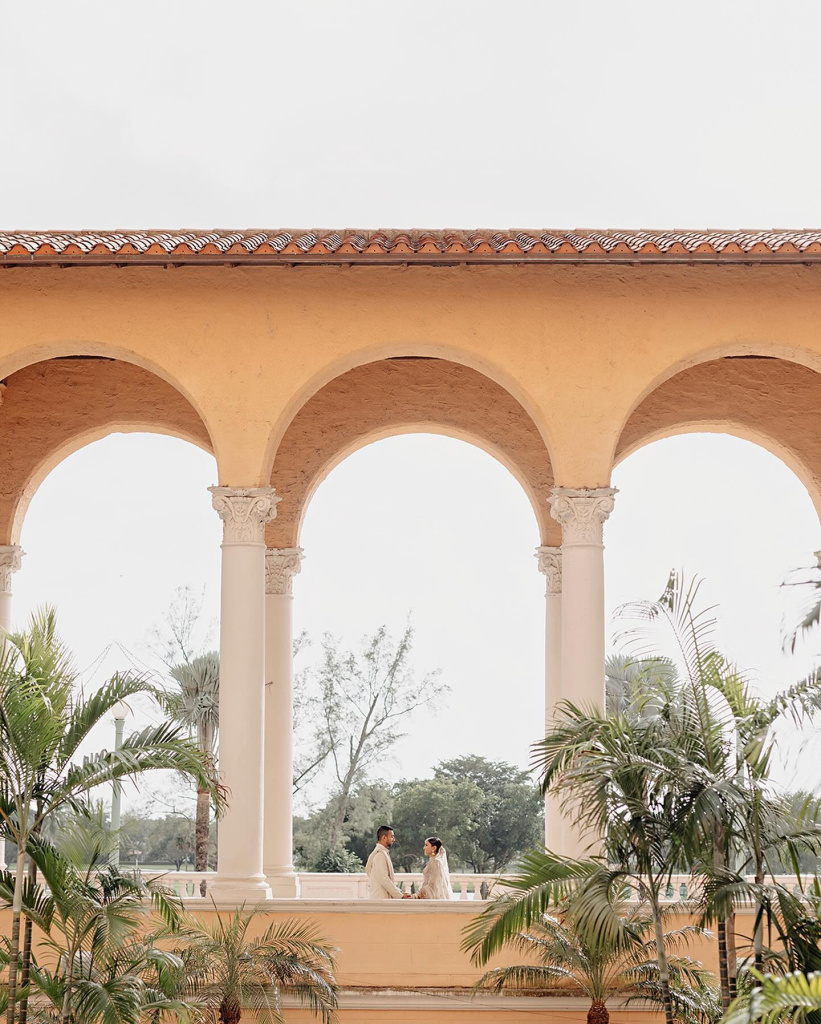
When it comes to Muslim wedding guest attire, it’s important to dress in a way that respects the cultural and religious values of these beautiful celebrations. Muslim weddings are typically modest, elegant, and traditional, so guests are encouraged to dress with sophistication while honoring the cultural context of the event. Here are some guidelines to help you choose an appropriate outfit:
- Opt for Modest Attire
- Avoid Tight or Revealing Clothing
- Incorporate Elegant and Tasteful Styles
- Choose Respectful Colors
- Add Traditional Touches (Optional)
- Consider Wearing a Headscarf (Optional for Women)
- Avoid Flashy Jewelry and Overly Casual Accessories
- Footwear: Comfortable yet Elegant
- Observe Seating or Gender-Specific Arrangements
- Dress Appropriately for the Venue
By dressing thoughtfully, guests show respect for the religious and cultural values of a Muslim wedding, helping to create an atmosphere of harmony and reverence.
Muslim Wedding FAQs
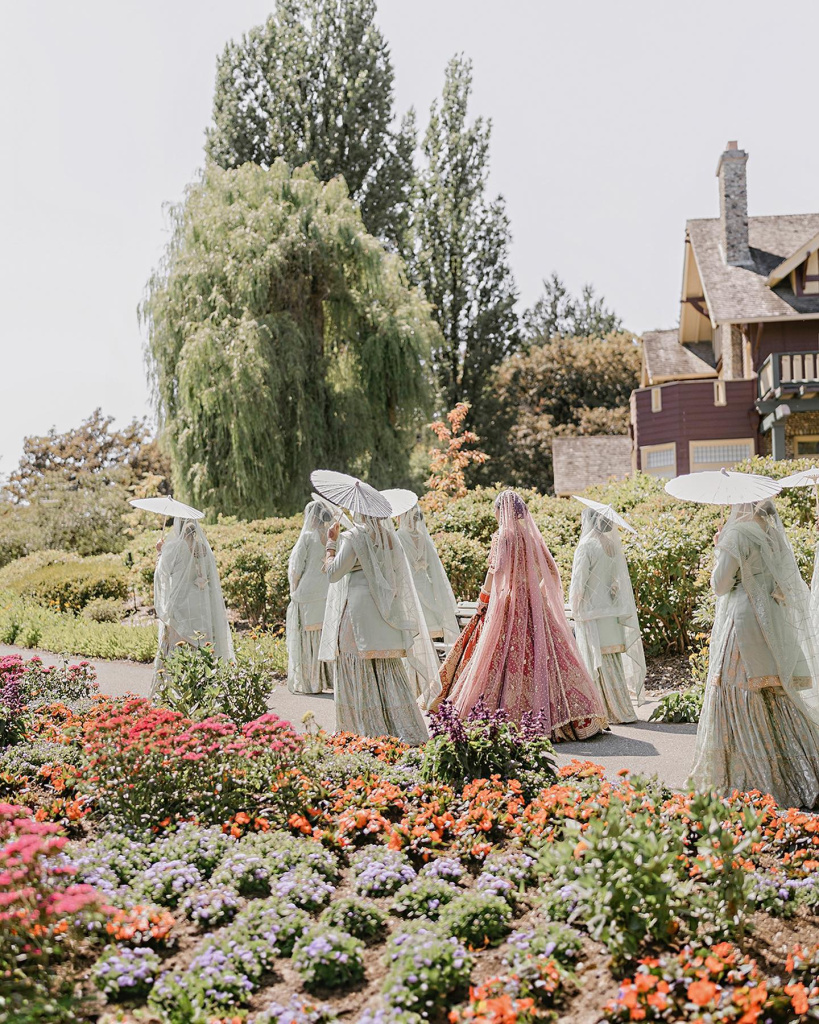
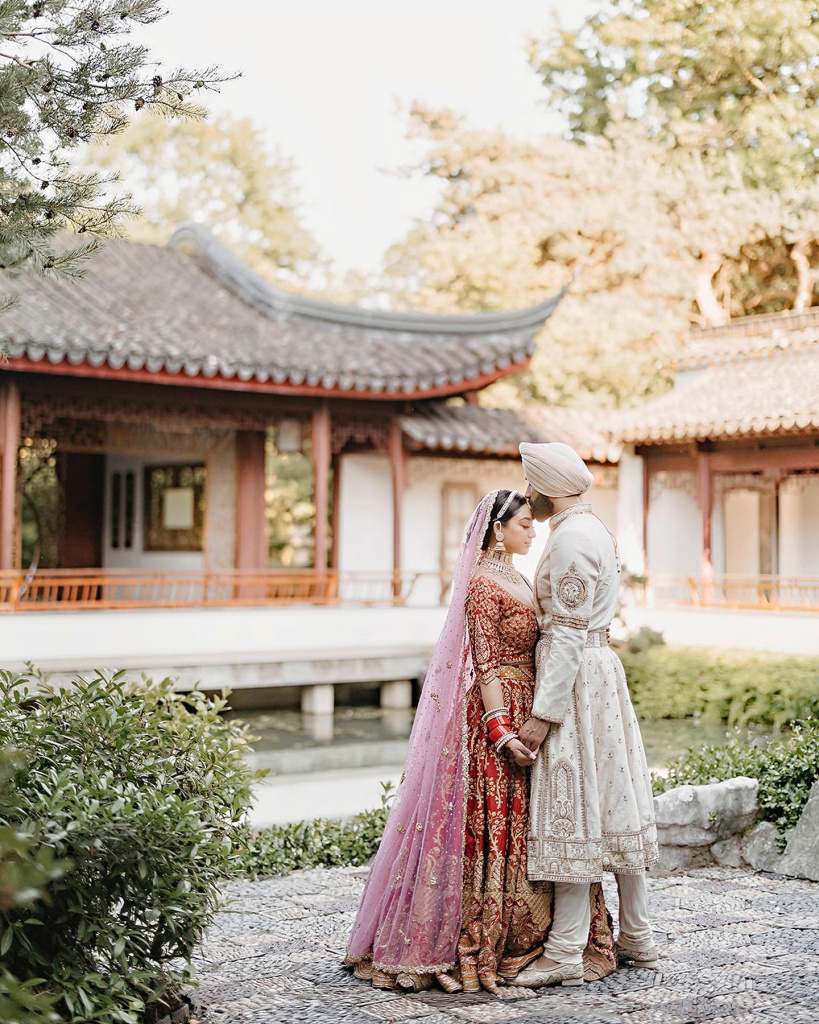
These FAQs provide a broader understanding of Muslim wedding customs, answering common questions about traditions, etiquette, and cultural practices that make each Muslim wedding unique.
Are Muslim weddings always held in a mosque?
No, while some Muslim couples choose to have their wedding ceremony (Nikah) in a mosque, many Muslim weddings are held in homes, wedding halls, or outdoor venues. Whether or not the Nikah takes place in a mosque often depends on family preference, cultural traditions, and the availability of a mosque that can accommodate the wedding size.
Do Muslim weddings have bridesmaids and groomsmen?
Yes, some Muslim weddings incorporate bridesmaids and groomsmen, though it’s more common in certain cultural backgrounds or among younger, modern couples. The roles of bridesmaids and groomsmen can vary, with some focusing on assisting the bride and groom throughout the ceremony, while others primarily participate in the festivities.
Is dancing allowed at Muslim weddings?
Whether or not dancing is allowed depends on cultural practices and family preferences. Some Muslim weddings, especially those with South Asian or African cultural influences, include dancing as a joyful part of the celebration. However, in more conservative families or religious settings, dancing may be limited or avoided altogether.
Can non-Muslims attend a Muslim wedding?
Yes, non-Muslims are generally welcome to attend Muslim weddings. Guests are expected to follow the same dress codes and respectful behavior as other attendees. Non-Muslims may also be required to observe certain customs, such as gender-segregated seating or covering the head if the ceremony takes place in a mosque. Attending a Muslim wedding can be a wonderful opportunity for non-Muslims to learn about and appreciate Islamic culture and traditions.
Are there Islamic wedding traditions regarding the honeymoon?
While Islam does not prescribe specific honeymoon traditions, many Muslim couples choose to go on a honeymoon after the wedding as a way to spend time together in privacy and relaxation. Some families might prefer a more modest or local trip, while others opt for an international destination. The choice typically depends on the couple’s preferences and cultural norms.
Do Muslim weddings always involve arranged marriages?
No, while arranged marriages are a tradition in some Muslim families, particularly in South Asia and the Middle East, many Muslim couples meet independently and enter into the marriage with mutual consent. Even in arranged marriages, Islam requires that both parties consent freely to the union, making arranged marriages a collaborative process rather than a forced one.
Are Muslim wedding vows recited during the Nikah?
Traditional Muslim wedding ceremonies do not typically include vows in the way Western weddings do. Instead, the couple recites their Ijab and Qabul (offer and acceptance), signaling their consent to the marriage. In some cases, couples may choose to include personal vows after the Nikah or during a cultural ceremony, but this is usually an addition rather than a requirement.

How long do Muslim wedding celebrations typically last?
Muslim wedding celebrations can range from a single day to multiple days of festivities, depending on cultural background and family preferences. In South Asian weddings, it’s common to have several pre-wedding events like the Mehndi and Sangeet, followed by the Nikah and Walima. In Middle Eastern and African weddings, the celebrations are often shorter, focusing primarily on the Nikah and Walima.
Is it common for couples to get legally married in addition to the Nikah?
Yes, while the Nikah fulfills the religious requirements for marriage, many Muslim couples also have a civil or legal marriage. This is especially common in countries where the Nikah is not recognized as a legal marriage. By registering their marriage legally, couples ensure that their union is recognized by both religious and civil authorities.
Are there rules about gift-giving for guests at Muslim weddings?
In many Muslim cultures, guests bring gifts, often in the form of money, for the bride and groom. Cash gifts are appreciated for their practicality, but some families may prefer traditional items, like home décor or kitchenware. It’s always polite to ask the family if there are any preferences or guidelines regarding gifts, as cultural norms around gift-giving can vary.










